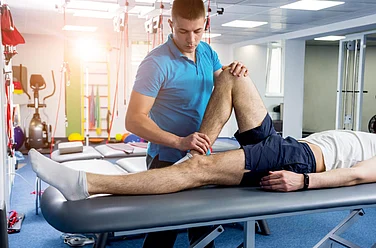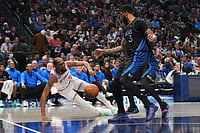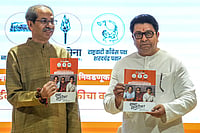Sports injuries are a growing concern in India and worldwide, with athletes increasingly suffering from ligament tears, stress fractures, and other strains. According to industry reports, knee and ankle injuries among Indian football and cricket players have surged by 500% in recent years, while anterior cruciate ligament (ACL) tears have risen by 400%. These trends not only jeopardize players’ careers but also strain medical budgets and team performance.
To combat this, Indian sports organizations are turning to advanced injury-prediction technologies, ranging from AI-driven analytics to wearable sensors and video analysis, that can proactively identify risk factors and prevent injuries before they occur.
Predictive Technologies in Sports
AI and Machine Learning Analytics: Modern AI systems integrate vast data sources, such as training load, fitness tests, and medical history, to detect patterns that precede injuries. By analyzing biomechanics and performance trends, machine-learning models can flag athletes at risk.
For instance, AI algorithms can identify early warning signs, like subtle changes in running gait, which may indicate fatigue or injury risk. High-level sports federations use these insights to customize training programs. As one sports technologist explains, "AI can detect anomalies that even experienced coaches might miss." Over time, this data-driven approach helps create personalized, injury-resistant training regimens.
Wearable Sensors and Trackers: Today’s wearables, embedded with GPS, accelerometers, and heart-rate monitors, track real-time metrics like distance covered, speed bursts, muscle load, and fatigue levels.
The Indian cricket team, for example, uses GPS-embedded compression vests to monitor players’ running distance, sprint effort, and heart rate. This data helps coaches intervene before overuse injuries occur.
Indian startups are also contributing:
Footrax (Ahmedabad) is developing affordable GPS trackers for grassroots athletes.
KIBI Sports (Pune) combines wearables with AI to provide real-time fitness feedback, helping athletes "push their limits while reducing injury risks."
Video and Motion Analysis: Computer-vision tools analyze video footage to detect technical flaws that could lead to injuries. AI-backed systems can flag improper landing angles or asymmetrical movements, helping correct form before damage occurs.
This technology is becoming standard in elite sports, where even minor deviations in shoulder mechanics or running patterns can signal injury risks.
Case Studies and Industry Examples
Globally, sports organizations using predictive tech report dramatic results. In soccer, Spanish club Getafe partnered with an AI analytics firm (Zone7) to monitor players’ data. The club saw injury rates drop sharply: a 40% reduction in total injuries in the first year, and a 66% reduction in the second year using the system. As Getafe’s head of performance noted, players who would normally have had three injuries in a season now had only one on average. Similarly, NBA and NFL teams use Catapult and other analytics platforms to monitor player loads, and professional leagues (Soccer, Rugby, Cricket) increasingly mandate wearable vests. Even in India, top teams have begun adopting these tools. The Indian cricket team’s trainers report that the GPS vests give “a clearer picture on load monitoring,” helping them keep bowlers and batsmen fit over long series. All these cases underline that data-driven monitoring – from individualized algorithms to high-speed cameras – can prevent injuries before they happen.
Indian Startups and Initiatives
Several “Make in India” sports tech ventures are emerging to bring these capabilities to Indian athletes:
KIBI Sports (Pune): Founded by ex-athlete Sagar Rai, KIBI offers a data platform linking with wearable trackers and smartphones. It provides AI-driven insights on fitness, recovery, and injury risk. Rai explains that KIBI’s system “integrates with existing wearable technologies,” enabling coaches to analyze dozens of metrics and identify overtraining. Olympian judoka Tulika Mann says KIBI’s insights “have been a game-changer” for her training approach.
Footrax (Ahmedabad): This startup focuses on affordable wearable trackers for grassroots and youth sports. Footrax has developed GPS-enabled insoles and bands that measure speed, distance, step load and more. In 2022 it raised USD 100,000 to expand its product range and make such data accessible to amateur players. The company’s goal is to “empower everyone…with data” – guiding even young athletes to optimize their play and avoid injury through daily analytics.
Stupa Sports Analytics (Delhi): Stupa offers AI-powered analytics and visualization tools to federations and broadcasters. Founded in 2020, Stupa claims partnerships with over 10 sports federations (tennis, table tennis, etc.) and is expanding into emerging sports like badminton and padel. Its platform ingests data (from wearables, match stats, video) and uses AI to highlight training load, technical weak spots and injury patterns. As Stupa’s co-founder notes, AI algorithms in their tool “can identify subtle changes in a player’s movement patterns that could signal an increased risk of injury”. Such analytics are being deployed by academies and state associations to level up training regimens.
Other initiatives include collaborations of Indian institutes on sports biomechanics and even government-supported AI projects for athlete health. Overall, a vibrant sports-tech ecosystem is emerging: the Indian sports technology market is projected to grow rapidly (to over USD 1.4 billion by 2033) driven by wearables, predictive platforms and data analytics. Major Indian leagues (IPL, Pro Kabaddi, ISL) are already integrating GPS vests and analytics dashboards, which paves the way for broader adoption at academies and training centers.
Why India Needs Injury-Prediction Tech
Adopting injury-prediction tech offers multiple benefits for Indian sports at all levels:
Fewer Injuries and Less Downtime: By forecasting risk, teams can prevent injuries before they sideline players. Studies and case examples show dramatic impact: Getafe’s AI analytics halved its injury incidence. AI systems continuously monitor biomechanical and fatigue data, alerting coaches to adjust training loads and reduce strain. This keeps more athletes healthy and available, which is critical in Indian sports where player depth can be shallow.
Optimized Performance: Data-driven insights let coaches tailor training and recovery for each athlete. Wearables and AI reveal hidden weaknesses or imbalances, enabling targeted exercises. For example, if analytics detect a bowler’s elbow is under unusual stress, his schedule can be modified to prevent an arm injury. Personalized training plans improve efficiency – players train smarter, not just harder. As noted above, AI can spot “subtle changes in movement” signaling fatigue and trigger corrective measures.
Cost Savings: Preventing injuries saves substantial medical and rehabilitation costs. Research indicates high returns on prevention: one study in the U.S. found that every $1 invested in ACL injury prevention saved over $7 in treatment and rehab costs. Even a few fewer major injuries could save Indian sports bodies millions of rupees. These savings are especially important in grassroots and college sports, where medical budgets are limited.
Extended Athletic Careers: By avoiding repetitive overuse, athletes can sustain longer competitive careers. Early intervention on tendinitis or stress fractures means players avoid chronic issues. In India – where promising careers are often cut short by injury – this could mean more players reaching their full potential.
Enhanced Grassroots Development: Affordable tech (like Footrax’s devices) is democratizing performance data. Schools and academies can use wearables and apps to monitor budding athletes, instilling good training habits early. This builds a stronger talent pipeline, as young players learn injury avoidance from the start.
Overall Competitive Edge: At the elite level, staying injury-free translates to more consistent performances. Teams leveraging analytics can field their best lineups more often and reduce performance dips due to unfit players. In the high-stakes environment of professional leagues, even small fitness margins can affect win-loss records.
In summary, predictive injury tools hold great promise for Indian sports. By combining AI analytics, wearable sensors, and video analysis, training centers can shift from reactive injury treatment to proactive injury prevention. The evidence is compelling: clubs using these technologies see significantly fewer injuries and better player availability. At the same time, studies show prevention is far cheaper than a cure. For India’s athletes, from school teams to national squads, embracing injury























